In today’s digital-first world, being visible online isn’t optional it’s survival.
When someone searches “best plumber near me” or “coffee shop in [city]”, the businesses that appear first get the call, the visit, or the sale.
In fact, research shows that over 75% of local searches result in a visit or call within 24 hours. That means if your business isn’t showing up in the right places, you’re losing opportunities every single day.
One of the simplest yet most powerful ways to boost your visibility is through business directories. These are online platforms that list your business name, address, phone number, website, and more.
Think of them as modern-day Yellow Pages only smarter, searchable, and designed for both search engines and customers.
In 2025, business directories are more important than ever because:
- They feed data directly into Google Maps, Apple Maps, and voice assistants like Siri and Alexa.
- They help improve your local SEO rankings by reinforcing the accuracy of your business information.
- They act as trust signals for customers researching businesses before making a decision.
This guide will walk you through everything you need to know about business directories in the USA. You’ll learn:
- What business directories are and how they work.
- Why they’re essential for SEO, credibility, and customer acquisition.
- Criteria to choose the best free directories (so you don’t waste time on low-value sites).
- A complete list of the Top 100+ Free U.S. Business Directories for 2025—organized and explained.
- Step-by-step instructions on how to submit your business to these directories.
- Common mistakes to avoid (that can actually hurt your SEO if ignored).
- Tools and best practices for managing your listings at scale.
- FAQs that answer the most common questions business owners have about directories.
By the end of this article, you’ll have a clear, actionable plan to claim, optimize, and manage your business listings ensuring your brand gets discovered by the right customers, at the right time, in the right place.
What Are USA Business Directories?
In the simplest sense, a business directory is an online platform that collects and displays company information in an organized, searchable way.
If the old Yellow Pages book was the print version, today’s business directories are its smarter, digital descendants. They live on the web, are searchable by keyword and location, and are deeply integrated into search engines, maps, and mobile apps.
Definition
A business directory is an online database where companies can create a profile that usually contains:
- Business name (NAP consistency is key)
- Physical address and phone number
- Website and social media links
- Operating hours
- Products, services, or categories
- Photos, videos, and logos
- Reviews and ratings from customers
These profiles serve as digital signposts, guiding customers to your business whether they’re searching on Google, Apple Maps, Yelp, or even voice assistants like Siri and Alexa.
How Business Directories Work
Business directories play two vital roles:
- For customers: They make discovery simple. Someone searching “best dentist near me” or “plumbers in Dallas” can instantly compare businesses, read reviews, and get directions.
- For search engines: They act as citation sources. When Google or Bing sees your business details consistently across multiple directories, it increases confidence that your business is legitimate. That trust can improve your chances of ranking in the local pack (the top three map results).
Example: If your café is listed on Google Business Profile, Yelp, and Facebook with the same address and phone number, Google is far more likely to show it to users searching “coffee near me.”
The Evolution of Business Directories in the USA
Business directories have evolved alongside consumer behavior:
- Pre-2000s: Printed Yellow Pages were every household’s go-to.
- 2000–2010: Online versions like YP.com, Superpages, and Citysearch replaced the big books.
- 2010–2020: Review-driven platforms like Yelp, TripAdvisor, and Angi gained traction, adding trust through customer ratings.
- 2020–2025: Mobile-first, AI, and voice search take over. Today, Siri, Alexa, and Google Assistant pull data directly from directories like Apple Maps, Yelp, and Google Business Profile.
This progression shows directories aren’t relics — they adapt with technology and remain central to business discovery.
Types of Business Directories
There are four main categories to know:
General directories — Open to all industries (e.g., Google Business Profile, Bing Places, Yelp, Yellow Pages).
Local/geographic directories — City, regional, or neighborhood-focused (e.g., Nextdoor, Patch, Chamber of Commerce sites).
Niche/industry-specific directories — Tailored to specific professions (e.g., Avvo for lawyers, Healthgrades for doctors, Zillow for real estate).
Data aggregators — Providers that feed information to many other platforms and apps (e.g., Foursquare, Neustar Localeze, Infogroup).
Why Directories Matter to Google & Bing
Search engines don’t rely only on your website. They cross-check your business data across directories to verify accuracy. This process, known as citation building, strengthens local SEO.
- Consistent details = higher trust and better visibility.
- Inconsistent details = confusion, which can hurt your rankings.
Key Takeaway: USA business directories are not optional. They’re essential digital infrastructure that improves your visibility to both customers and search engines.
Also Read: Google Core Update September 2025: What Changed and How to Recover
Benefits of Listing Your Business
If you’re wondering whether free business directories are worth your time in 2025, the answer is simple: yes.
These platforms remain one of the easiest and most cost-effective ways to increase visibility, credibility, and customer engagement.
Here’s why every U.S. business from solo entrepreneurs to nationwide franchises should claim and optimize their listings.
1. SEO Boost Through Citations
Search engines like Google and Bing rely on citations (mentions of your Name, Address, and Phone number — NAP) to validate your business information.
- The more consistent your NAP across trusted directories, the stronger your local SEO signals become.
- Businesses with complete directory coverage are far more likely to appear in the Google Local 3-Pack (the top three map results).
2. Credibility & Trust Signals
Customers often check multiple sources before making a decision.
- Verified listings on platforms like BBB, Yelp, and Angi act as third-party endorsements.
- A positive review profile builds trust and reduces purchase hesitation.
- Even a simple presence across multiple directories signals legitimacy: “If they’re everywhere, they must be real.”
3. Local Reach & Discovery
Not all searches start on Google. Many people begin their search on platforms like Yelp, TripAdvisor, Facebook, or Apple Maps.
- Being listed across these platforms ensures you’re found wherever customers look.
- Directories also power voice search assistants like Siri, Alexa, and Google Assistant — making you discoverable in hands-free queries.
4. Traffic, Calls & Leads
Business directories drive direct customer actions, not just impressions.
- “Click to Call” buttons turn mobile users into instant leads.
- “Get Directions” functions bring walk-in customers straight to your door.
- Some directories (like OpenTable or Zocdoc) even allow direct bookings and reservations.
5. Brand Visibility Across Multiple Touchpoints
Customers rarely buy from the first business they see. They bounce between Google, Facebook, Yelp, and even niche sites before making a choice. Having consistent listings means you appear at every stage of their journey.
6. Mobile-First Advantage
With over 60% of U.S. searches happening on mobile, directories provide a mobile-optimized way for customers to find you quickly. Most are app-based, giving you visibility in GPS apps, maps, and location-based services.
Mini Case Study
A local HVAC company in Phoenix claimed and optimized its profiles on Google Business Profile, Yelp, and Angi. In 90 days, they saw:
- 27% more phone calls from directory referrals.
- 18% increase in booked appointments through online requests.
- A jump into the Google Local Pack for “AC repair Phoenix.”
Top 5 Measurable Benefits You Should Expect
- More phone calls from potential customers.
- Better visibility in Google Maps and local results.
- Consistent branding across the web.
- Growth in reviews and social proof.
- Referral traffic and leads from high-authority platforms.
Bottom line: Business directories don’t just build visibility; they build trust and conversions. For a free tactic, the ROI is unbeatable.
Criteria for Selecting the Best Free Directories
With hundreds of business directories out there, it’s easy to waste time submitting your business to the wrong ones.
Some platforms offer high visibility and credibility, while others are low-quality “link farms” that can actually damage your reputation.
Here’s a clear framework to help you choose the best free directories in the USA for 2025.
1. Domain Authority & Trustworthiness
- High-authority sites like Google, Yelp, or TripAdvisor are trusted by both search engines and customers.
- Avoid directories with low credibility or those that look outdated or spammy.
2. Traffic & Visibility Levels
- Ask: Does this directory get real users?
- Directories that appear on page 1 of Google for “near me” searches or industry-specific keywords are worth your time.
3. Industry / Niche Relevance
- General directories work for everyone, but niche platforms often deliver higher-quality leads.
- Examples: Avvo for lawyers, Healthgrades for doctors, Zillow for real estate agents.
4. Local vs National Reach
- Local directories (city guides, chambers of commerce, Nextdoor) help you dominate a region.
- National directories (Yelp, Facebook, Apple Maps) expand your overall visibility.
- A mix of both is best.
5. Review Features & Reputation Management
- Directories that allow reviews add a layer of trust.
- Customers often trust these reviews as much as personal recommendations.
- Prioritize platforms where you can respond to reviews (GBP, Yelp, Facebook).
6. Ease of Claiming & Updating
- Some directories have smooth sign-up and verification (Google, Bing).
- Others may require manual approval or even phone/postcard verification.
- Choose ones you can easily update whenever your details change.
7. Mobile Friendliness & App Presence
- Many searches happen on mobile or apps.
- Platforms like Apple Maps, Yelp, and Facebook are app-first — meaning your business is discoverable even without a web browser.
8. Integration With Maps, GPS & Third-Party Apps
- Some directories power other platforms (e.g., Foursquare feeds data to Uber, Airbnb, Snapchat).
- Listing once can multiply your visibility.
Red Flags to Watch Out For
- Spammy directories stuffed with ads.
- Directories demanding payment for basic listings.
- Sites that don’t allow you to update info after submission.
Quick Pre-Submission Checklist
Before you submit your business, ask yourself:
- Does this directory appear in Google search results?
- Is it relevant to my business/industry?
- Will customers actually use it?
- Can I edit and update my info easily?
- Does it allow reviews or map integration?
- Is it free for a basic listing?
- Does it avoid spammy SEO practices?
If the answer is “yes” to at least 5 of these, it’s worth your time. Quality > quantity. Focus on trusted, high-traffic, and relevant directories to get the maximum SEO and visibility benefits.
Also Read: 50 Most Popular Business Listing Websites in Canada
The Complete List of Top 100+ Free USA Business Directories (2025)
One of the fastest ways to boost your online visibility is to get your business listed on multiple trusted directories.
These platforms increase your chances of being discovered, strengthen your local SEO signals, and drive direct customer actions like calls, directions, and bookings.
Below, you’ll find the most up-to-date list of 100+ free U.S. business directories in 2025, carefully organized into categories for easier navigation.
Pro Tip: Start with the Must-Claim Top 10 and then work your way through the directories that are most relevant to your industry and location.
Category A — Must-Claim Directories (Top 10)
These are non-negotiable. Every business should start here.
- Google Business Profile — google.com/business
- Features: Google Maps integration, reviews, Q&A, posts, bookings.
- Who should use it: Every single business.
- Apple Business Connect — businessconnect.apple.com
- Features: Apple Maps visibility, Siri integration, highlight offers.
- Who: Local businesses targeting iPhone users.
- Bing Places — bingplaces.com
- Features: Bing Maps, sync with Google Business Profile.
- Who: All businesses (covers Microsoft ecosystem).
- Facebook Business Page — facebook.com/business/pages
- Features: Reviews, posts, Messenger, events.
- Who: Retail, restaurants, service providers.
- Yelp — yelp.com
- Features: Reviews, photos, booking integrations.
- Who: Restaurants, salons, local services.
- LinkedIn Company Page — linkedin.com/company
- Features: Employer branding, B2B visibility.
- Who: Agencies, consultants, B2B services.
- TripAdvisor — tripadvisor.com
- Features: Reviews for hospitality & attractions.
- Who: Hotels, restaurants, attractions.
- Foursquare — foursquare.com
- Features: Location database powering apps like Uber, Snapchat.
- Who: Retail, food, entertainment venues.
- MapQuest — mapquest.com/business/listings
- Features: Driving directions, maps.
- Who: Service providers, stores.
- Yellow Pages (YP) — yp.com
- Features: Online Yellow Pages, categories.
- Who: General small businesses.
Category B — Consumer-Focused General Directories
- Angi — angi.com (home services leads).
- HomeAdvisor — homeadvisor.com (connects homeowners with contractors).
- Houzz — houzz.com/professionals (design & remodel portfolios).
- Porch — porch.com (home improvement services).
- Thumbtack — thumbtack.com (quote requests, freelancer services).
- Nextdoor Business Page — nextdoor.com/business (hyperlocal visibility).
- Superpages — superpages.com (general listings).
- Citysearch — citysearch.com (restaurants, nightlife, spas).
- Local.com — local.com (community search).
- ShowMeLocal — showmelocal.com (SEO-friendly listings).
- Manta — manta.com (small business hub).
- MerchantCircle — merchantcircle.com (local networking, coupons).
- HotFrog — hotfrog.com (free profiles + backlinks).
- EZlocal — ezlocal.com (citation building).
- Brownbook — brownbook.net (global, editable directory).
- 2FindLocal — 2findlocal.com (local search by city & category).
Category C — B2B Directories
- Crunchbase — crunchbase.com (startups & funding profiles).
- AngelList (Wellfound) — wellfound.com (startups & hiring).
- Clutch — clutch.co (agency reviews).
- GoodFirms — goodfirms.co (IT & software firms).
- ThomasNet — thomasnet.com (manufacturing suppliers).
- Kompass — kompass.com (global B2B directory).
- Best of the Web (BOTW) — botw.org (curated online directory).
- DexKnows — dexknows.com (local business search).
- Bizapedia — bizapedia.com (company profiles & filings).
- Alignable — alignable.com (networking for small businesses).
Category D — Professional Services (Law, Finance, Medical)
- Avvo — avvo.com (lawyer directory).
- Justia — justia.com (free legal profiles).
- FindLaw — lawyers.findlaw.com (law firm directory).
- Martindale-Hubbell — martindale.com (peer ratings).
- Nolo — nolo.com (legal resources + listings).
- Lawyers.com — lawyers.com (legal Q&A + profiles).
- SuperLawyers — superlawyers.com (recognized attorneys).
- CPA Directory — cpadirectory.com (accountants & CPAs).
- AccountingToday Directory — accountingtoday.com (CPA firms).
- Healthgrades — healthgrades.com (doctor reviews).
- Zocdoc — zocdoc.com (doctor appointment bookings).
- Vitals — vitals.com (physician directory).
Category E — Real Estate & Property
- Zillow — zillow.com (real estate listings + agent profiles).
- Realtor.com — realtor.com (MLS + agent directory).
- Trulia — trulia.com (neighborhood insights).
- Redfin — redfin.com (agent pages).
- Homes.com — homes.com (listings).
- Apartments.com — apartments.com (rentals).
- LoopNet — loopnet.com (commercial real estate).
- HotPads — hotpads.com (rentals).
- RealtyTrac — realtytrac.com (foreclosures, data).
- CoStar — costar.com (commercial real estate intelligence).
Category F — Health & Wellness
- RateMDs — ratemds.com (doctor ratings).
- WebMD Directory — webmd.com (doctor search).
- CareDash — caredash.com (clinic reviews).
- Doctor.com — doctor.com (healthcare listings).
- Psychology Today — psychologytoday.com (therapists).
- Wellness.com — wellness.com (holistic health).
- U.S. News Doctor Finder — health.usnews.com/doctors (ranked physicians).
Category G — Home Services & Contractors
- Handy — handy.com (home cleaners, handymen).
- TaskRabbit — taskrabbit.com (local gig workers).
- Fixr — fixr.com (cost guides + listings).
- ServiceWhale — servicewhale.com (home improvement bids).
- BuildZoom — buildzoom.com (licensed contractors).
- Pro Referral (Home Depot) — proreferral.com (contractors).
- CraftJack — craftjack.com (lead gen).
- Thumbtack (already listed, but key for contractors).
Category H — Automotive & Vehicle
- Cars.com — cars.com (dealer pages).
- Autotrader — autotrader.com (auto listings).
- CarGurus — cargurus.com (dealer reviews).
- Edmunds — edmunds.com/dealers (dealer directory).
- Kelley Blue Book (KBB) — kbb.com (dealer profiles).
- RepairPal — repairpal.com (auto repair shops).
- CARFAX Dealer Directory — carfax.com (dealer listings).
Category I — Regional & Local Directories
- Patch — patch.com (community news + business pages).
- ChamberofCommerce.com — chamberofcommerce.com (local chambers).
- BizJournals Local — bizjournals.com (regional directories).
- LocalStack — localstack.com (local directory).
- FindUsLocal — finduslocal.com (local events + listings).
- CommunityWalk — communitywalk.com (map-based).
- State.gov business directories (varies by state).
- County chambers of commerce (local).
- City.gov directories (official local government listings).
- Tourism & visitor bureau directories (regional).
Category J — Emerging / Startup Platforms
- Product Hunt — producthunt.com (tech startups).
- BetaList — betalist.com (early-stage startups).
- Betafy — betafy.com (beta testing).
- StackShare — stackshare.io (tech stack transparency).
- IndieHackers — indiehackers.com (founders & makers).
- Crunchbase (already listed) (still essential for startups).
- Hacker News “Show HN” — news.ycombinator.com (product launches).
- AngelList/Wellfound (already listed) (startup hiring + investors).
- Kickstarter — kickstarter.com (crowdfunding campaigns).
- Gust — gust.com (startup funding).
Step-by-Step Guide to Submitting Your Business
Submitting your business to directories is straightforward, but doing it systematically and consistently makes the difference between strong visibility and wasted effort. Follow this step-by-step guide to get it right the first time.
Step 1: Prepare Your NAP Information
- Finalize your official business name, address, and phone number (NAP).
- Use the exact same format everywhere.
Example: “123 Main St, Suite 200” should not appear as “123 Main Street #200” elsewhere.
Step 2: Create a Master Listing Sheet
Use a spreadsheet to track submissions. Include columns like:
- Directory name
- URL
- Claimed? (Y/N)
- Login email & password
- Verification method (phone, postcard, email)
- Date submitted
- Notes (e.g., categories used, pending verification)
This becomes your single source for managing all listings.
Step 3: Search Before Adding
- Many directories already list your business (often with outdated info).
- Use “Claim this business” rather than creating a duplicate.
Step 4: Sign Up or Claim
- If new, create a free account.
- If existing, click “Claim this business” and follow the verification process.
Step 5: Fill Out Mandatory Fields First
- Business name, address, phone number.
- Website and category.
- Hours of operation.
- These are the essentials for appearing in search results.
Step 6: Optimize Optional Fields
Don’t skip optional details — they improve conversions.
- Add a keyword-rich but natural description.
- Upload your logo and high-quality photos.
- Include services, menus, or product catalogs (if supported).
Step 7: Verify Your Listing
Directories verify authenticity using one of these methods:
- Phone call with a code.
- Postcard mailed to your address.
- Email link to your business email.
- Verification is critical — unverified listings often don’t appear in search results.
Step 8: Keep a Record of Credentials
Save usernames and passwords in your master sheet (or a secure password manager). You’ll need them for future updates or audits.
Step 9: Track and Monitor
- Log the submission date.
- Check weekly until the listing goes live.
- Mark status as “Active” once visible.
Step 10: Rinse & Repeat
- Submit 5–10 directories per week instead of all at once.
- This approach keeps the process manageable and reduces errors.
Pro Tip: Write a 150-character business description and a 200-word version once, then reuse them across directories to ensure NAP consistency and save time.
Best Practices for Managing Business Listings
Submitting your business to directories is only the first step. To maximize visibility and customer trust, you need to maintain, monitor, and optimize your listings over time. Here are the best practices every business should follow.
1. Keep NAP Consistent Everywhere
- Always copy/paste your official Name, Address, Phone (NAP) from your master sheet.
- Even small differences (e.g., “St.” vs. “Street”) can confuse search engines.
- Consistency strengthens your local SEO signals.
2. Audit Listings Regularly
- Schedule audits at least quarterly.
- Check for duplicates, outdated addresses, or old phone numbers.
- Use tools like BrightLocal, Moz Local, or Semrush Listing Management for bulk audits.
3. Monitor & Respond to Reviews
- Reviews are a major trust and ranking factor.
- Always respond to both positive and negative feedback.
- Quick, professional responses show you care — and can turn unhappy customers into loyal ones.
4. Refresh Photos & Content
- Outdated photos make your business look inactive.
- Add seasonal updates: holiday décor, new menu items, recent projects.
- Post updates where possible (Google Business Profile posts, Facebook updates).
5. Track Directory Performance
- Add UTM parameters to your directory links so you can measure referral traffic in Google Analytics.
- Example: ?utm_source=yelp&utm_medium=directory&utm_campaign=local_listings
- Check which directories actually send traffic and leads — focus your energy there.
6. Assign Ownership
- Listings need ongoing care.
- Assign one team member, VA, or agency to manage logins, audits, and reviews.
- Without ownership, directories quickly become outdated.
7. Watch for Duplicates
- Duplicate listings can split reviews and confuse search engines.
- Most directories allow you to “report” or “merge” duplicates. Do this ASAP.
Key Takeaway:
Submitting your business is only half the job. The businesses that win in local SEO are those that actively manage listings with consistent updates, reviews, and audits.
Common Mistakes to Avoid
Business directories can be powerful tools for visibility and lead generation, but many businesses misuse them in ways that actually hurt their SEO and credibility. Below are the most common mistakes companies make — and how you can avoid them.
1. Creating Duplicate Listings
The problem: Many businesses unknowingly create multiple profiles for the same location. This splits reviews across different listings, confuses customers, and weakens local SEO signals.
Example: A restaurant with two Yelp pages might have 50 reviews on one and 30 on another, instead of a single strong profile with 80 reviews.
Solution:
- Always search the directory first before creating a new listing.
- If a duplicate exists, use the “Report Duplicate” or “Merge” option.
- For Google Business Profile, request ownership and consolidate listings.
2. Inconsistent NAP Information
The problem: Small formatting differences like “St.” vs. “Street” or “(555) 123-4567” vs. “555-123-4567” may seem minor, but search engines treat them as separate entities.
Why it matters: Google relies on consistency across directories to verify business legitimacy. Inconsistencies can reduce your chances of appearing in the Local Pack.
Solution:
- Create a master document with your official Name, Address, Phone (NAP).
- Always copy/paste this data when submitting listings.
- Standardize formatting (decide once: “Street” or “St.” and stick with it).
3. Keyword Stuffing Business Names
The problem: Adding extra keywords into your business name — e.g., “Joe’s Pizza – Best New York Pizza Delivery Open Late” — is tempting but risky.
Why it matters: Directories like Google and Yelp have strict guidelines. Violating them can lead to suspension or removal.
Solution:
- Use your real-world business name only.
- Add services and keywords in the description, not the title.
- If your legal name includes keywords (e.g., “Dallas Plumbing & Heating”), that’s fine.
4. Ignoring Reviews
The problem: Many businesses don’t engage with reviews. A negative review left unanswered signals poor customer service.
Why it matters: 89% of consumers read businesses’ responses to reviews. Ignoring them damages trust.
Solution:
- Respond to every review within a few days.
- Thank happy customers.
- Address complaints politely and offer resolution.
- Use templates for efficiency but personalize them.
5. Submitting to Spammy Directories
The problem: Not all directories are equal. Low-quality sites often exist only to sell backlinks. Submitting your business there can harm SEO.
Solution:
- Stick to trusted directories that rank in Google.
- Avoid platforms overloaded with ads, broken links, or irrelevant categories.
- Use tools like Moz’s Spam Score to check a directory’s credibility.
6. Forgetting to Update After Moving or Rebranding
The problem: Old addresses and phone numbers can live online for years. Customers may show up at the wrong location or call a disconnected number.
Solution:
- Update listings immediately after a move or rebrand.
- Audit your directories at least every quarter.
- Prioritize the “Top 10 Must-Claim” first (Google, Yelp, Apple Maps, etc.).
7. Incomplete Profiles
The problem: Some businesses stop at name, address, and phone — skipping descriptions, photos, or hours.
Why it matters: Complete listings get up to 70% more clicks than incomplete ones.
Solution:
- Fill in every field available.
- Upload at least 5–10 high-quality photos.
- Add business hours, services, and links to booking tools if available.
8. Using Fake or Purchased Reviews
The problem: Buying reviews may seem like a shortcut, but platforms like Google and Yelp aggressively remove fake ones — and may penalize your listing.
Solution:
- Focus on getting authentic reviews.
- Ask happy customers directly.
- Use in-store signage, email follow-ups, or QR codes linking to your profile.
Key Takeaway:
Directories work best when they’re accurate, consistent, and actively managed. Avoiding these mistakes ensures you build credibility with both customers and search engines, instead of losing trust and rankings.
Tools & Resources for Directory Management
Manually claiming and maintaining 50–100 business listings is a time-consuming job. While it’s possible to track everything in a spreadsheet, most businesses benefit from using professional tools that automate and simplify the process.
Here are the top tools and resources for managing business listings in 2025 — along with their strengths and best use cases.
1. Moz Local
What it does: Distributes your business information across major directories and data aggregators. Automatically fixes inconsistencies and suppresses duplicates.
Best for: Small to mid-sized businesses that want reliable, “set it and forget it” listing management.
Key features:
- Syncs data to 40+ directories.
- Real-time updates.
- Duplicate suppression.
- Reporting dashboard.
2. BrightLocal
What it does: A local SEO toolkit with powerful audit, reporting, and review management features.
Best for: Agencies managing multiple clients or businesses wanting deep insights into citations and rankings.
Key features:
- Citation audits & tracking.
- Review monitoring across platforms.
- Local rank tracking (map + organic).
- White-label reporting for agencies.
3. Yext
What it does: Enterprise-grade listing management solution. Distributes data to 100+ directories, GPS apps, and voice assistants.
Best for: Large businesses, franchises, or enterprises with many locations.
Key features:
- Real-time listing updates.
- Integration with Alexa, Siri, Google Assistant.
- Advanced analytics.
- Enterprise support.
4. Semrush Listing Management
What it does: Combines SEO + listing management. Pushes your data to directories while integrating with Semrush’s keyword and competitor tools.
Best for: Businesses already using Semrush for SEO.
Key features:
- Citation building & cleanup.
- Visibility and consistency reports.
- Integration with SEO data.
5. Synup
What it does: Provides real-time monitoring and multi-location support. Also offers strong review management tools.
Best for: Multi-location businesses needing central control.
Key features:
- Multi-location management.
- Review response automation.
- Listing accuracy monitoring.
6. Free / DIY Method
What it is: The old-fashioned approach: build a spreadsheet (with columns for directory name, login, NAP, and status) and update listings manually.
Best for: Solopreneurs, startups, or businesses on a very tight budget.
Key features:
- 100% free.
- Full control.
- Labor-intensive; prone to human error.
Choosing the Right Tool
- Small businesses (1–3 locations): Moz Local or DIY spreadsheet.
- Growing businesses (3–10 locations): BrightLocal or Semrush Listing Management.
- Enterprises / franchises (10+ locations): Yext or Synup.
Key Takeaway: If you manage only a handful of listings, a spreadsheet works fine. But if you’re serious about local SEO or run multiple locations, investing in a listing management tool saves time, ensures consistency, and protects your brand reputation.
FAQs About Business Directories
1. Do business directories still matter in 2025 for SEO?
Yes, business directories remain highly valuable. They provide local citations, improve map visibility, attract reviews, and drive referral traffic, all of which signal trust to search engines and boost local SEO performance.
2. What is the difference between free and paid directory listings?
Free listings allow basic business details like name, address, phone, website, and hours. Paid listings often include premium features such as enhanced profiles, ads, and lead generation, which may deliver better visibility and ROI.
3. How many directories should I list my business on?
At minimum, claim top platforms like Google, Apple Maps, Yelp, Bing, and Facebook. For stronger visibility, aim for 30–50 directories, including niche and local platforms, ensuring consistent NAP across all listings.
4. Can directory links improve SEO rankings?
Most directory links are nofollow, but they remain valuable. Their real SEO impact comes from consistent citations, reviews, and improved chances of appearing in local map results, all of which build credibility with search engines.
5. How long does it take to see results from directories?
Basic visibility usually appears in 1–4 weeks. Local SEO improvements may take 2–3 months of consistent submissions, while reviews, engagement, and traffic growth remain ongoing as customers interact with your listings.
6. Can spammy directories hurt my business?
Google does not directly penalize businesses for spammy directories, but low-quality listings can damage credibility and waste time. It is best to focus on trusted, authoritative directories rather than link farms or spam sites.
7. Do voice assistants rely on business directories?
Yes. Siri uses Apple Maps, Alexa often sources Yelp and Yext, and Google Assistant depends on Google Business Profile. Keeping directory listings accurate ensures your business appears when customers use voice search.
Conclusion
Business directories may seem simple, but in 2025 they remain one of the most powerful, low-cost marketing tools available to U.S. businesses. When used strategically, they:
- Boost your local SEO rankings through consistent citations.
- Build trust and credibility with customer reviews.
- Expand your visibility across search engines, maps, and voice assistants.
- Drive calls, website visits, and walk-in traffic directly from directory referrals.
The path forward is straightforward:
- Start with the Top 10 must-claim directories (Google, Apple Maps, Bing, Yelp, Facebook, LinkedIn, TripAdvisor, etc.).
- Expand into industry-specific and regional directories that match your niche.
- Use a master listing sheet or tools like BrightLocal, Moz Local, or Yext to stay consistent.
- Audit and update your listings regularly to maintain accuracy.
Every listing is another digital doorway that brings customers closer to your business. The sooner you claim and optimize your profiles, the sooner you’ll see real results in visibility, leads, and growth.
Don’t wait — claim your Google Business Profile today, then knock out 5–10 more listings this week. Small steps now build long-term visibility.



















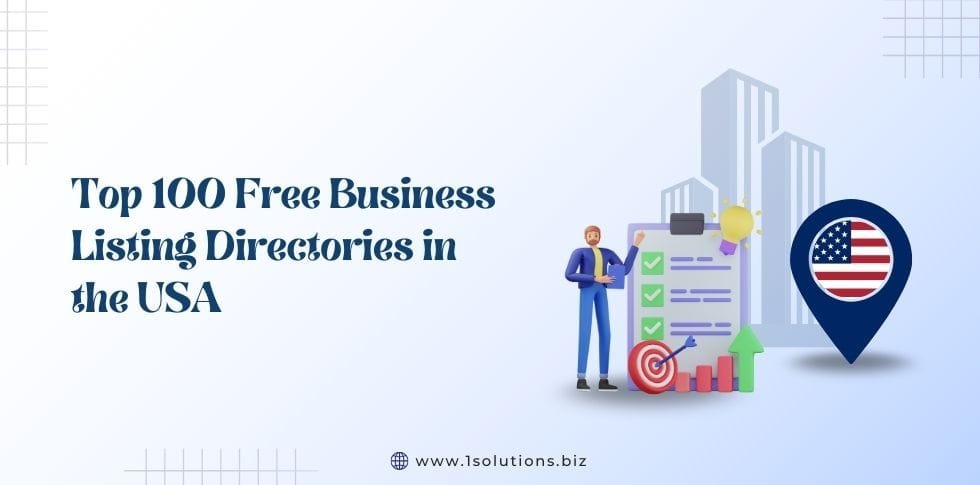
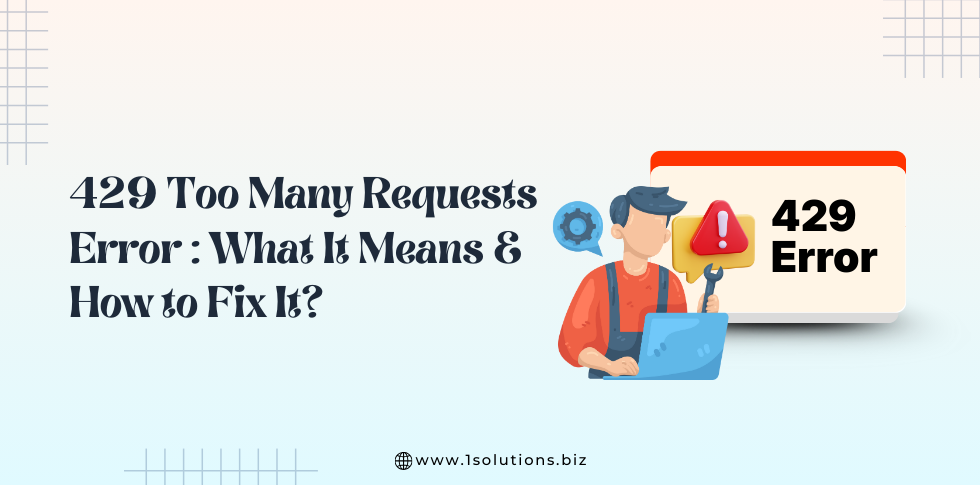
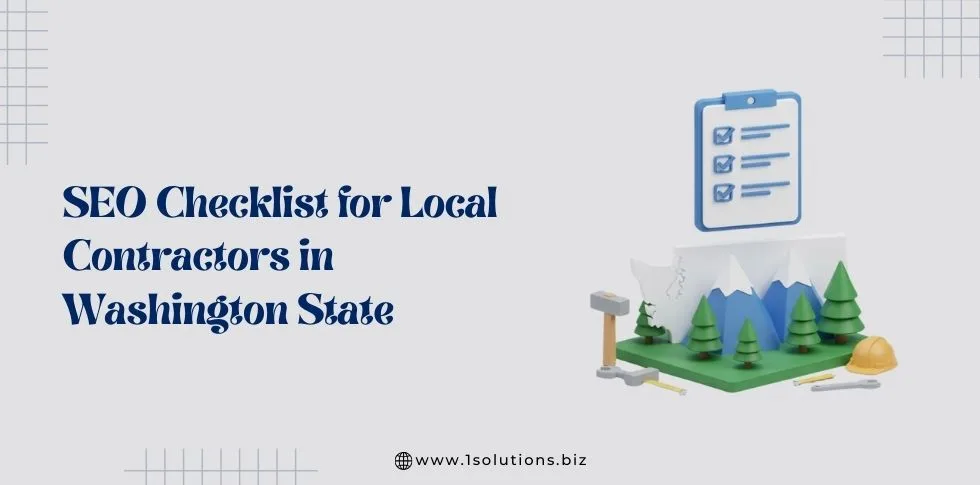


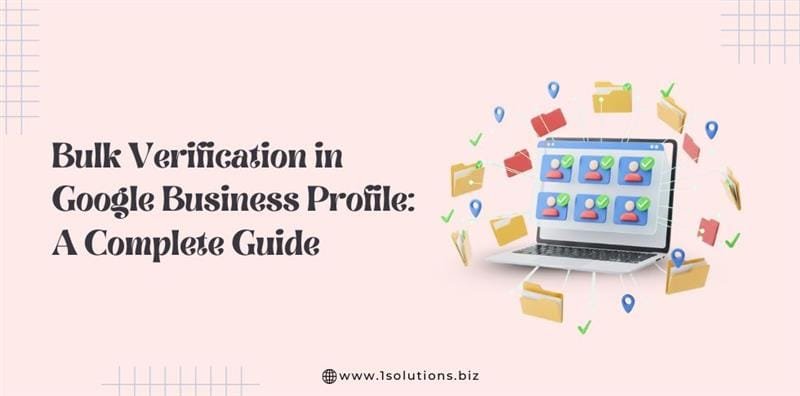
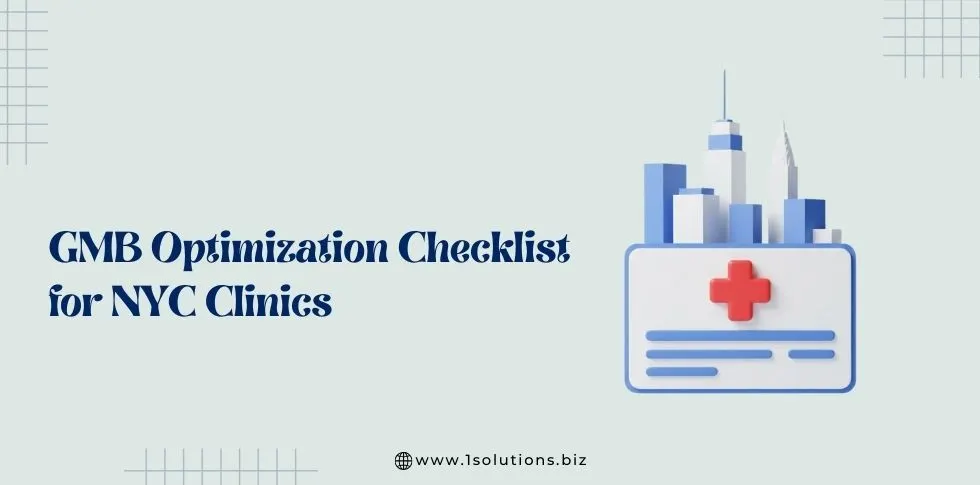

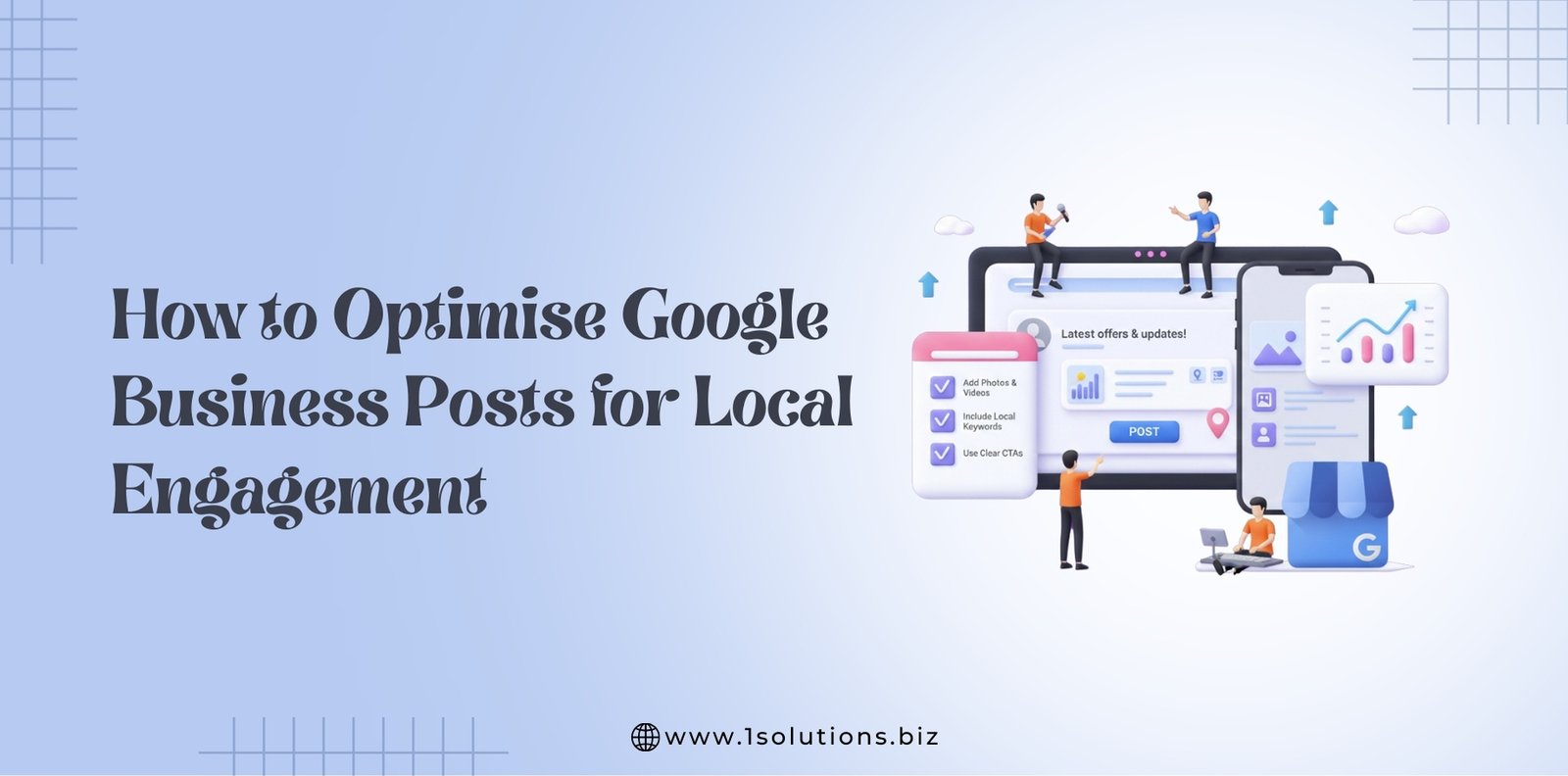




 in India
in India